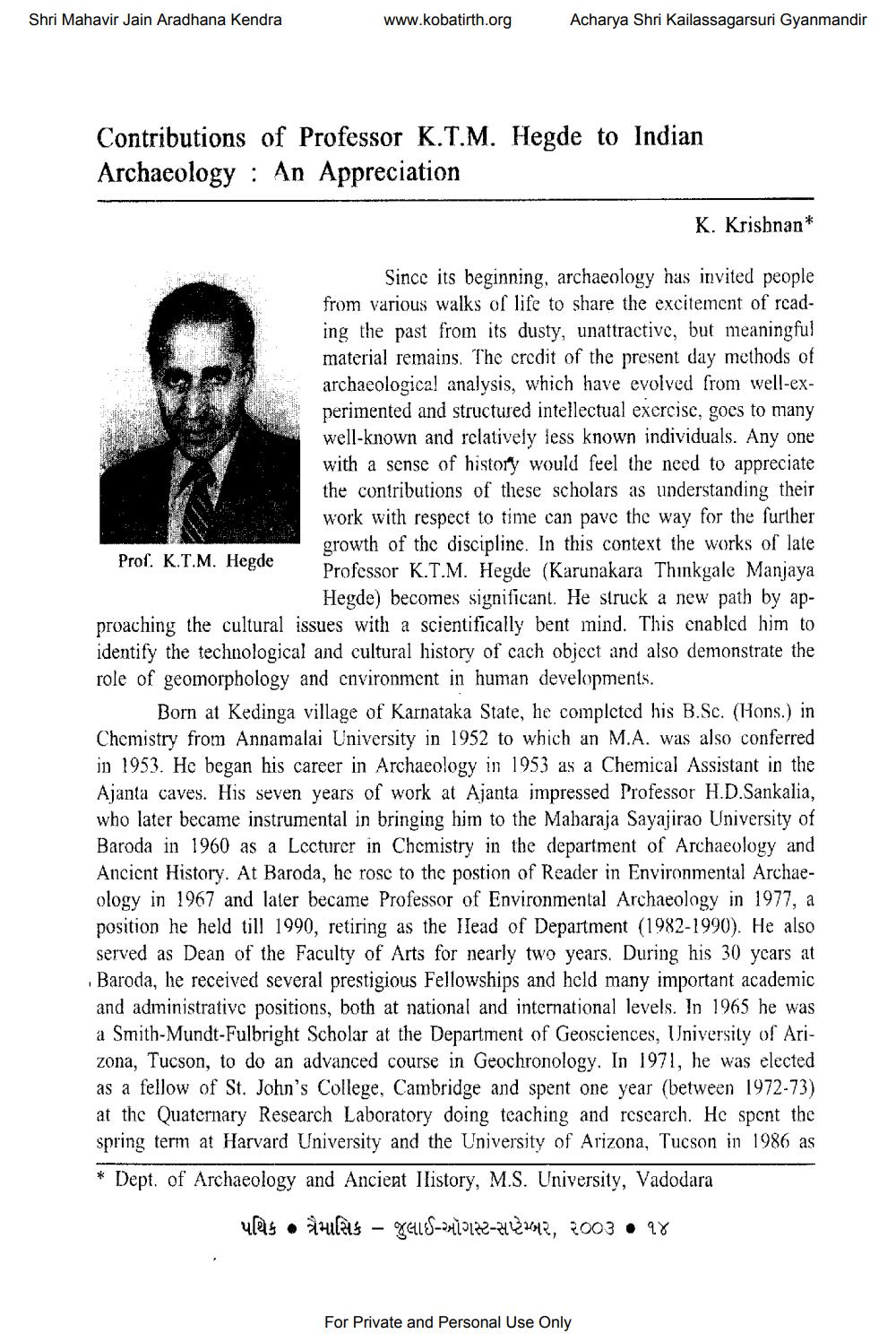________________
Shri Mahavir Jain Aradhana Kendra
www.kobatirth.org
Acharya Shri Kailassagarsuri Gyanmandir
Contributions of Professor K.T.M. Hegde to Indian Archaeology : An Appreciation
K. Krishnan*
Since its beginning, archaeology has invited people from various walks of life to share the excitement of reading the past from its dusty, unattractive, but meaningful material remains. The credit of the present day methods of archaeological analysis, which have evolved from well-experimented and structured intellectual exercise, goes to many well-known and relatively less known individuals. Any one with a sense of history would feel the need to appreciate the contributions of these scholars as understanding their work with respect to time can pave the way for the further
growth of the discipline. In this context the works of late Prof. K.T.M. Hegde
Professor K.T.M. Hegde (Karunakara Thinkgale Manjaya
Hegde) becomes significant. He struck a new path by approaching the cultural issues with a scientifically bent mind. This enabled him to identify the technological and cultural history of cach object and also demonstrate the role of geomorphology and environment in human developments.
Born at Kedinga village of Karnataka State, he completed his B.Sc. (Hons.) in Chemistry from Annamalai University in 1952 to which an M.A. was also conferred in 1953. He began his career in Archaeology in 1953 as a Chemical Assistant in the Ajanta caves. His seven years of work at Ajanta impressed Professor H.D.Sankalia, who later became instrumental in bringing him to the Maharaja Sayajirao University of Baroda in 1960 as a Lecturer in Chemistry in the department of Archaeology and Ancient History. At Baroda, he rose to the postion of Reader in Environmental Archaeology in 1967 and later became Professor of Environmental Archaeology in 1977, a position he held till 1990, retiring as the lead of Department (1982-1990). He also served as Dean of the Faculty of Arts for nearly two years. During his 30 years at Baroda, he received several prestigious Fellowships and held many important academic and administrative positions, both at national and international levels. In 1965 he was a Smith-Mundt-Fulbright Scholar at the Department of Geosciences, University of Arizona, Tucson, to do an advanced course in Geochronology. In 1971, he was elected as a fellow of St. John's College, Cambridge and spent one year (between 1972-73) at the Quaternary Research Laboratory doing teaching and research. He spent the spring term at Harvard University and the University of Arizona, Tucson in 1986 as * Dept. of Archaeology and Ancient Ilistory, M.S. University, Vadodara
ulas
Aulas – TuS-2410122-248242, 2003 • 98
For Private and Personal Use Only




